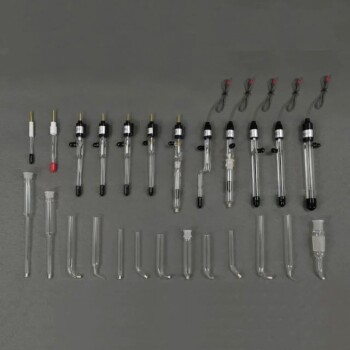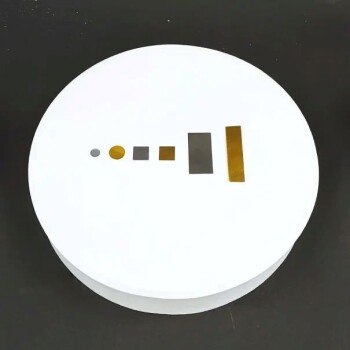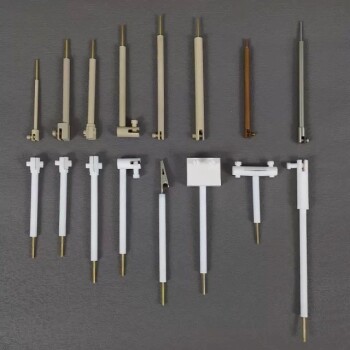Table of Contents
- Introduction: Understanding Reference Electrodes
- Calomel Reference Electrode: Construction and Principles
- Silver Chloride Reference Electrode: Properties and Applications
- Mercury Sulfate Reference Electrode: Characteristics and Uses
- Comparison of Calomel, Silver Chloride, and Mercury Sulfate Reference Electrodes
- Applications of Reference Electrodes in Electrochemical Measurements
- Maintenance and Troubleshooting of Reference Electrodes
- Conclusion: The Importance of Reference Electrodes in Electrochemistry
Introduction: Understanding Reference Electrodes
Reference electrodes are essential components of electrochemical measurements, providing a stable and well-defined reference point for potential measurements. They serve as the foundation for accurate and reliable electrochemical analysis. This article delves into the world of reference electrodes, exploring their construction, principles, and applications. We will examine the most commonly used types of reference electrodes, including calomel, silver chloride, and mercury sulfate, highlighting their advantages, limitations, and specific applications.
Calomel Reference Electrode: Construction and Principles
The calomel reference electrode is a widely used reference electrode in electrochemistry. It is relatively easy to construct and maintain, and it provides a stable and reproducible potential.
Components of a Calomel Reference Electrode
The main components of a calomel reference electrode are:
- Mercury and mercury-chloride molecules
- Saturated potassium chloride (KCl) solution
- Platinum wire
The mercury and mercury-chloride molecules form the electrode's half-cell. The saturated KCl solution provides a stable ionic environment for the electrode, and the platinum wire allows for electrical contact to the external circuit.

Advantages of Calomel Electrodes
There are several advantages to using calomel reference electrodes, including:
- Ease of construction and maintenance: Calomel reference electrodes are relatively simple to construct and maintain. They do not require any special reagents or equipment.
- Stability and reproducibility: Calomel reference electrodes provide a stable and reproducible potential. They are not affected by changes in temperature or pressure.
- Wide range of applications: Calomel reference electrodes can be used in a wide range of applications, including electrochemistry, corrosion testing, and environmental monitoring.
Electrochemical Reaction and Potential of the Calomel Electrode
The electrochemical reaction that occurs at the calomel reference electrode is: Hg2Cl2(s) + 2e- → 2Hg(l) + 2Cl-(aq)
The standard potential of this reaction is 0.241 V at 25 °C. This means that the calomel reference electrode has a potential of 0.241 V with respect to the standard hydrogen electrode (SHE).
Applications of Calomel Reference Electrodes
Calomel reference electrodes are used in a wide range of applications, including:
- Electrochemistry: Calomel reference electrodes are used as a reference electrode in electrochemical cells. They provide a stable and reproducible potential that can be used to measure the potential of other electrodes.
- Corrosion testing: Calomel reference electrodes are used in corrosion testing to measure the corrosion potential of metals. This information can be used to assess the corrosivity of different environments and to develop corrosion protection strategies.
- Environmental monitoring: Calomel reference electrodes are used in environmental monitoring to measure the pH of water and soil. This information can be used to assess the health of aquatic ecosystems and to track changes in water quality over time.
Silver Chloride Reference Electrode: Properties and Applications
Composition and Structure
The silver chloride reference electrode is a widely used reference electrode due to its low cost and non-toxicity compared to other options like the calomel electrode. It consists of a solid silver wire coated with precipitated silver chloride (AgCl). The electrode is placed in a tube containing a solution of potassium chloride (KCl) and silver chloride (AgCl).
Electrolyte Filling Solution and Liquid Junction
The reference electrode contains an electrolyte filling solution, typically saturated KCl with AgCl, which surrounds the internal silver-silver chloride element. The filling solution is contained within a glass or plastic body salt bridge that terminates at the liquid junction. It is crucial to maintain the internal element wet and submerged in the filling solution to ensure proper electrode function.
Applications
Silver chloride reference electrodes are widely employed in electrochemistry, biology, and environmental monitoring due to their stable and reliable potential.
Electrochemistry: The Ag/AgCl reference electrode is used as a reference point for potential measurements in electrochemical cells. It provides a stable and consistent potential against which the potential of other electrodes can be compared.
Biology: Reference electrodes are essential in electrophysiological studies to measure electrical signals in living organisms, such as the action potentials of neurons. The Ag/AgCl electrode is commonly employed due to its non-toxicity and biocompatibility.
Environmental Monitoring: Reference electrodes are used in environmental monitoring to measure the redox potential of natural waters. The Ag/AgCl electrode is suitable for this purpose due to its stability and resistance to contamination.
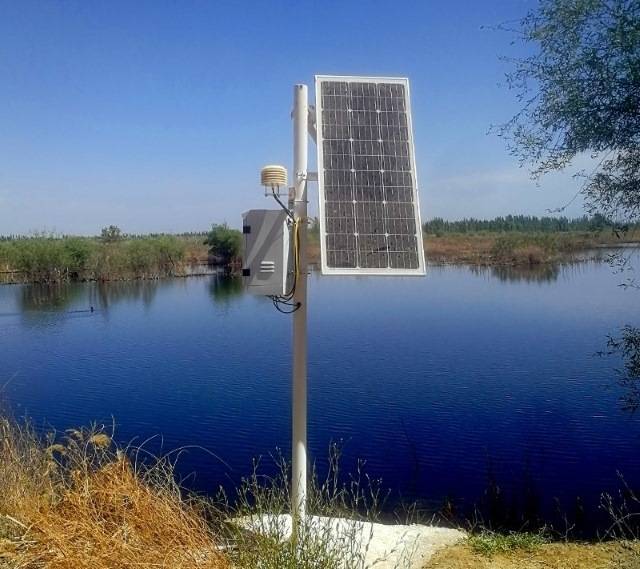
Advantages and Limitations
Advantages:
- Stable and reliable potential
- Non-toxic compared to other reference electrodes
- Inexpensive and readily available
- Can be used in a wide range of applications
Limitations:
- Temperature dependence of potential
- Susceptible to contamination if the liquid junction is not properly maintained
- Not suitable for use in highly acidic or alkaline solutions
Mercury Sulfate Reference Electrode: Characteristics and Uses
Mercury sulfate reference electrodes are a type of reference electrode that uses a mercury/mercury sulfate half-cell as the reference element. They are characterized by their high stability, low temperature dependence, and wide range of applications.
Construction and Components
Mercury sulfate reference electrodes consist of the following components:
- Mercury/mercury sulfate half-cell: This is the core of the electrode and consists of a mercury electrode in contact with a saturated solution of mercury sulfate.
- Electrolyte: The electrolyte is typically a saturated solution of potassium sulfate (K2SO4).
- Reference electrode body: The body of the electrode is typically made of glass or epoxy and houses the half-cell and electrolyte.
Electrochemical Reaction and Potential
The electrochemical reaction that occurs at the mercury/mercury sulfate half-cell is: Hg2SO4(s) + 2e- ⇌ 2Hg(l) + SO42-(sat'd)
This reaction results in a stable potential of 0.64 V with respect to the standard hydrogen electrode (SHE) at 25°C.
Applications
Mercury sulfate reference electrodes are widely used in both industrial and laboratory settings. Some common applications include:
- Industrial:
- pH measurement in industrial processes
- Electroplating
- Corrosion monitoring
- Laboratory:
- pH measurement in research and analytical chemistry
- Electrochemistry
- Electrogravimetry
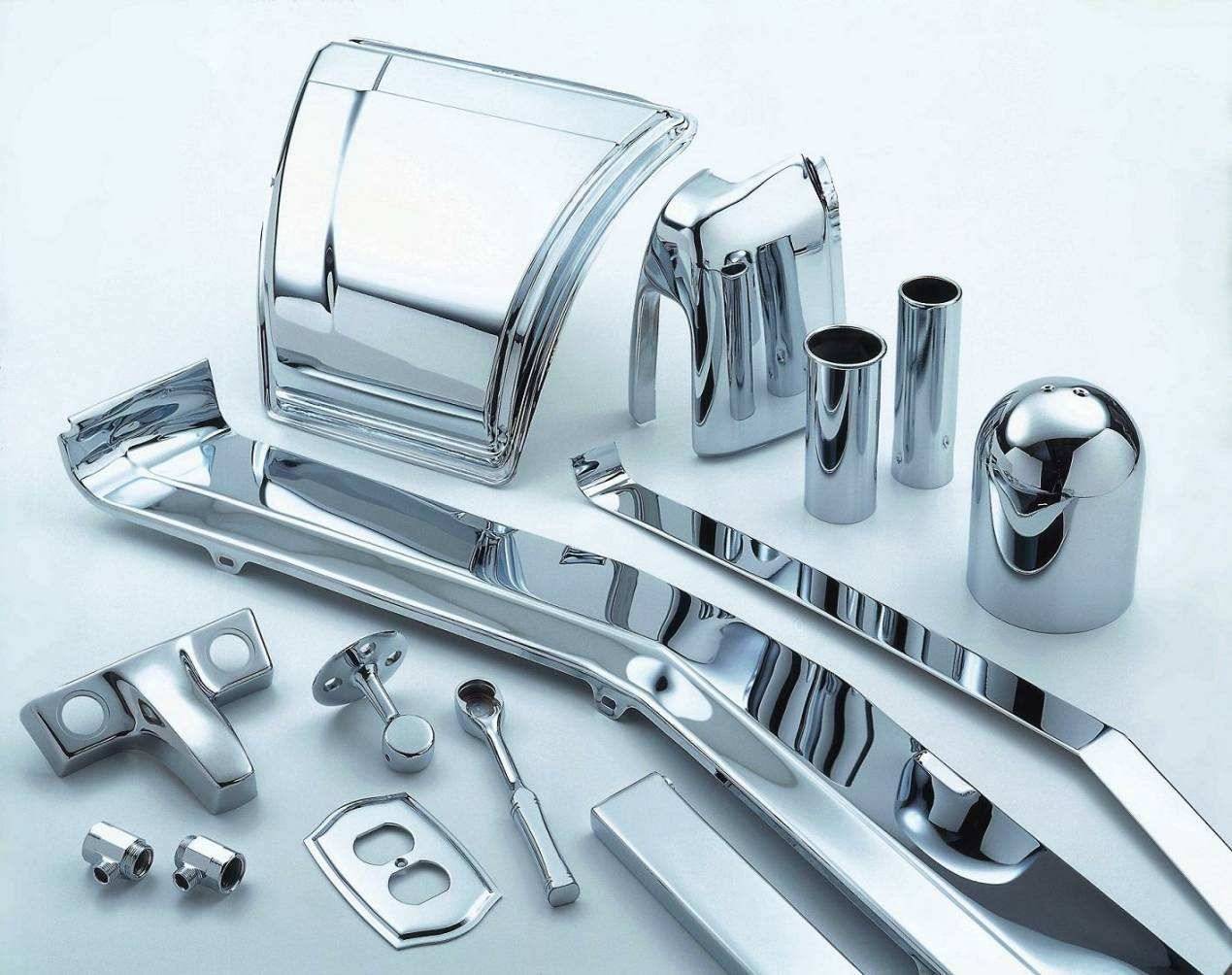
Advantages of Mercury Sulfate Reference Electrodes
Mercury sulfate reference electrodes offer several advantages over other types of reference electrodes:
- High stability: They exhibit a very stable potential over time, even under varying conditions.
- Low temperature dependence: Their potential is relatively insensitive to temperature changes.
- Wide range of applications: They can be used in a variety of industrial and laboratory applications.
- Low cost: They are relatively inexpensive compared to other types of reference electrodes.
Disadvantages of Mercury Sulfate Reference Electrodes
Despite their advantages, mercury sulfate reference electrodes also have some disadvantages:
- Toxicity: Mercury is a toxic substance, and precautions must be taken when handling and disposing of these electrodes.
- Limited temperature range: They have a limited temperature range of operation, typically from -10°C to 100°C.
- Not suitable for non-aqueous solvents: They cannot be used in non-aqueous solvents.
Comparison of Calomel, Silver Chloride, and Mercury Sulfate Reference Electrodes
Similarities and Differences in Construction and Principles
Reference electrodes establish a stable and defined potential for electrochemical measurements. They commonly employ a combination electrode design, integrating both a reference and working electrode into a single probe. However, separate reference electrodes are also available for specific applications.
Calomel, silver chloride, and mercury sulfate electrodes are three commonly used reference electrodes. Each has a distinct construction and principle of operation:
-
Calomel Electrode (Hg/HgCl2): Consists of a solid paste of Hg2Cl2 and liquid mercury immersed in a saturated KCl solution. The saturated solution fixes the activity of chloride ions, allowing for a stable potential.
-
Silver Chloride Electrode (Ag/AgCl): Utilizes a silver wire or cartridge coated with silver chloride (AgCl). The electrode is immersed in a KCl solution, which establishes a stable potential due to the low solubility of AgCl.
-
Mercury Sulfate Electrode (Hg/HgSO4): Comprises a mercury electrode immersed in a saturated potassium sulfate (K2SO4) solution. The sulfate ions in the solution form a sparingly soluble precipitate of Hg2SO4, resulting in a stable potential.
Advantages and Disadvantages
Each reference electrode type offers unique advantages and disadvantages:
Calomel Electrode:
- Advantages: Stable potential, low temperature coefficient, relatively easy to maintain
- Disadvantages: Contains mercury, which poses environmental concerns
Silver Chloride Electrode:
- Advantages: Common and versatile, low cost, no mercury
- Disadvantages: Can be affected by sulfide ions, may exhibit drift in some applications
Mercury Sulfate Electrode:
- Advantages: Stable potential, high accuracy, low temperature coefficient
- Disadvantages: Contains mercury, limited temperature range
Selection Criteria for Specific Applications
The choice of reference electrode depends on several factors, including:
- Sample Compatibility: The electrode should not react chemically with the sample being measured.
- Stability: The electrode should maintain a constant potential throughout the measurement.
- Response Time: The electrode should respond quickly to changes in potential.
- Temperature: The electrode should operate within the temperature range of the application.
- Chemical Composition: The electrode materials should be compatible with the sample.
Double Junction Electrodes
Double junction electrodes incorporate a lower electrolyte chamber containing an electrolyte different from the upper reference chamber. This customized lower electrolyte can enhance compatibility with the sample, preventing junction blocking and ensuring reliable readings.
Applications of Reference Electrodes in Electrochemical Measurements
Reference electrodes play a crucial role in electrochemical measurements, providing a stable and defined potential against which the potential of the working electrode is measured. Their applications span various fields, including:
Potentiometric Titrations:
Reference electrodes serve as a reference point for determining the equivalence point in potentiometric titrations. By monitoring the potential difference between the working electrode and the reference electrode, the concentration of the analyte can be accurately determined.
pH Measurements and Ion-Selective Electrodes:
Reference electrodes are essential for measuring pH levels and ion concentrations using pH and ion-selective electrodes. These electrodes rely on the potential difference between the reference electrode and the ion-selective electrode to determine the concentration of the specific ion in the sample.
Corrosion Studies and Electroplating:
Reference electrodes are used in corrosion studies to monitor the potential of metal surfaces and assess their susceptibility to corrosion. In electroplating, reference electrodes control the potential of the working electrode, ensuring the desired thickness and quality of the deposited metal coating.
Selecting a Reference Electrode:
Choosing the appropriate reference electrode for an application requires considering several factors, including:
- Compatibility with the Sample: The electrolyte in the reference electrode should not chemically interact with the sample.
- Stability: The reference electrode should maintain a constant potential throughout the measurement.
- Response Time: The electrode should respond quickly to changes in potential to ensure efficient analysis.
- Temperature Range: The temperature range of the reference electrode should match the operating conditions of the application.
- Chemical Composition: The material of the reference electrode should be resistant to the chemicals present in the sample.
Available Reference Electrodes:
Commonly used reference electrodes include:
- Silver/Silver Chloride (Ag/AgCl)
- Saturated Calomel (SCE)
- Mercury/Mercury (Mercurous) Oxide (Hg/Hg2O)
- Mercury/Mercury Sulfate (Hg/HgSO4)
- Copper/Copper Sulfate (Cu/CuSO4)
The choice of reference electrode depends on the specific application requirements, such as temperature range, sample chemistry, and desired accuracy.
Maintenance and Troubleshooting of Reference Electrodes

Common Problems Encountered with Reference Electrodes and Their Solutions
- Drifting or unstable readings: This can be caused by a number of factors, including:
- Leakage of the filling solution
- Drying out of the liquid junction
- Contamination of the filling solution
- Changes in the temperature of the solution
- Slow response times: This can be caused by:
- A clogged liquid junction
- A damaged reference element
- A low concentration of electrolyte in the filling solution
- High resistance: This can be caused by:
- A dirty or corroded liquid junction
- A damaged reference element
- A low concentration of electrolyte in the filling solution
Proper Storage and Handling Techniques for Reference Electrodes
- Store reference electrodes in a cool, dry place.
- Keep the liquid junction wet at all times.
- Do not expose reference electrodes to extreme temperatures.
- Do not drop or otherwise damage reference electrodes.
- Clean reference electrodes regularly with a mild detergent solution.
Calibration and Verification Procedures to Ensure Accuracy
- Calibrate reference electrodes regularly using a known reference solution.
- Verify the accuracy of reference electrodes by comparing their readings to those of a known reference electrode.
- If a reference electrode is not calibrated or verified, it may not provide accurate readings.
Effects of Changing the Reference Fill Solution
- Changing the reference fill solution can change the potential developed at the fill solution-internal reference element interface.
- This new potential may be less stable and/or more sensitive to temperature changes than the previous fill solution.
- It is important to allow a reference electrode to stand overnight filled with its new reference filling solution before using it.
- Most people do not change out the reference fill solution, but simply purchase separate reference electrodes, with each reference electrode being dedicated to a single reference fill solution.
Conclusion: The Importance of Reference Electrodes in Electrochemistry
Reference electrodes play a crucial role in electrochemical measurements by providing a stable and well-defined reference point. Calomel, silver chloride, and mercury sulfate electrodes are commonly used due to their well-established properties and applications. Calomel electrodes offer ease of construction and maintenance, while silver chloride electrodes find applications in various fields, including electrochemistry, biology, and environmental monitoring. Mercury sulfate electrodes are utilized in industrial and laboratory settings. Understanding the characteristics, advantages, and limitations of each type of reference electrode is essential for selecting the most appropriate one for specific electrochemical measurements. By employing proper maintenance and troubleshooting techniques, the accuracy and reliability of reference electrodes can be ensured, leading to precise and meaningful electrochemical data.
Related Products
- Reference Electrode Calomel Silver Chloride Mercury Sulfate for Laboratory Use
- Copper Sulfate Reference Electrode for Laboratory Use
- Gold Electrochemical Sheet Electrode Gold Electrode
- Platinum Sheet Electrode for Laboratory and Industrial Applications
- High Purity Gold Platinum Copper Iron Metal Sheets
Related Articles
- A Beginner's Guide to Understanding Reference Electrodes in Electrochemistry
- Comprehensive Guide to Reference Electrodes: Types, Applications, and Selection Criteria
- Understanding Saturated Calomel Reference Electrodes: Composition, Uses, and Considerations
- How to Choose the Right Reference Electrode for Your Application
- Electrolytes and Electrochemical Electrodes

